
Plymouth is a port city and unitary authority in Devon, South West England. It is located on the south coast of Devon, approximately 36 miles (58 km) southwest of Exeter and 193 miles (311 km) southwest of London. It is bordered by Cornwall to the west and southwest.
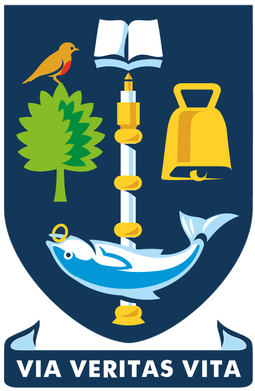
The University of Glasgow is a public research university in Glasgow, Scotland. Founded by papal bull in 1451 [O.S. 1450], it is the fourth-oldest university in the English-speaking world and one of Scotland's four ancient universities. Along with the universities of St Andrews, Aberdeen, and Edinburgh, the university was part of the Scottish Enlightenment during the 18th century. Glasgow is the largest university in Scotland by total enrolment and with over 19,500 postgraduates the second-largest in the United Kingdom by postgraduate enrolment.

The University of Bristol is a red brick Russell Group research university in Bristol, England. It received its royal charter in 1909, although it can trace its roots to a Merchant Venturers' school founded in 1595 and University College, Bristol, which had been in existence since 1876.

Newcastle University is a public research university based in Newcastle upon Tyne, North East England. It has overseas campuses in Singapore and Malaysia. The university is a red brick university and a member of the Russell Group, an association of research-intensive UK universities.

The University of Kent is a semi-collegiate public research university based in Kent, United Kingdom. The university was granted its royal charter on 4 January 1965 and the following year Princess Marina, Duchess of Kent, was formally installed as the first Chancellor.
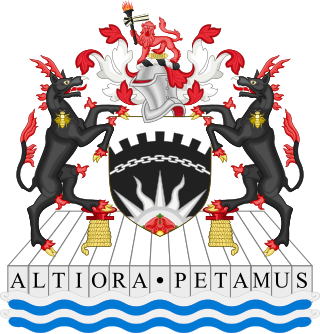
The University of Salford is a public research university in Salford, Greater Manchester, England, 1 mile west of Manchester city centre. The Royal Technical Institute, Salford, which opened in 1896, became a College of Advanced Technology in 1956 and gained university status in 1967, following the Robbins Report into higher education.

The University of the West of England is a public research university, located in and around Bristol, England, UK. With more than 36,000 students and 4,200 staff, it is the largest provider of higher education in the South West of England.
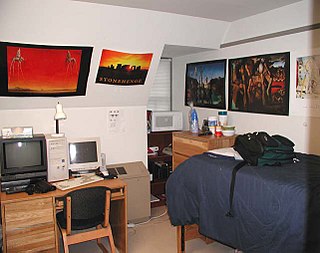
A dormitory, also known as a hall of residence or a residence hall, is a building primarily providing sleeping and residential quarters for large numbers of people such as boarding school, high school, college or university students. In some countries, it can also refer to a room containing several beds accommodating people.
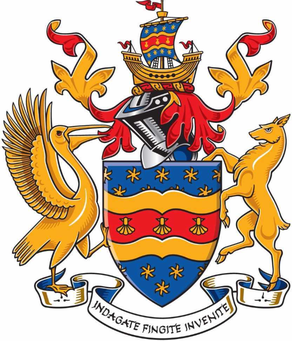
The University of Plymouth is a public research university based predominantly in Plymouth, England, where the main campus is located, but the university has campuses and affiliated colleges across South West England. With 18,410 students, it is the 57th largest in the United Kingdom by total number of students.
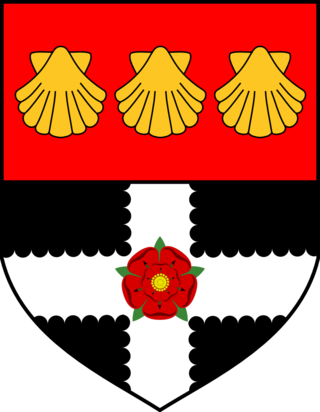
The University of Reading is a public research university in Reading, Berkshire, England. It was founded in 1892 as University College, Reading, a University of Oxford extension college. The institution received the power to grant its own degrees in 1926 by royal charter from King George V and was the only university to receive such a charter between the two world wars. The university is usually categorised as a red brick university, reflecting its original foundation in the 19th century.

This is a list of halls of residence on the various campuses of the University of Nottingham in Nottingham, England.

The University of Exeter offers approximately 5,900 purposebuilt student bed spaces for its students. The majority of its residences are located on campus, although 30% of self-catered accommodations are located off-campus.

Arts University Bournemouth is a further and higher education university based in Poole, England, specialising in art, performance, design, and media. It was formerly known as The Arts University College at Bournemouth and The Arts Institute at Bournemouth and is the home of Bournemouth Film School.

The University for the Creative Arts is a specialist art and design university in the south of England.

Appleton Tower is a tower block in Edinburgh, Scotland, owned by the University of Edinburgh.
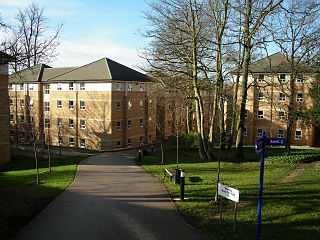
Cheney Student Village is one of the nine halls of residence at Oxford Brookes University in Oxford, England. Located on Cheney Lane in Headington, a few minutes walk away from the Gipsy Lane campus, it houses 750 students in single study bedrooms with en suite shower rooms and self catered kitchens.

Drake is an election ward within Plymouth, Devon, England. One of the main roads from the city to Tavistock and Dartmoor runs through the ward. In the past it played an important role in the supply of water to Plymouth, and it was the location of both a fatal bomb explosion and a large unexploded bomb during the Plymouth Blitz. The University of Plymouth has its main campus in this ward and the large student population has led to part of it being designated as one of the four areas subject to Designated Public Places Orders in the city. It is also the location of the city's main railway station, museum and public library.

Bruce Hall is a residential college of the Australian National University (ANU), in Canberra, Australia. Opened in 1961, the original Bruce Hall was a campus landmark and housed both the first undergraduate hall of residence at the university and the first in Australia to admit both men and women. The college has produced notable alumni across a range of fields.
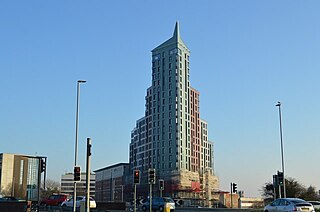
Beckley Point is a private student accommodation building in Plymouth, Devon, United Kingdom. It is owned and operated by Yugo, previously known as the Student Housing Company.

The Roland Levinsky Building is the University of Plymouth's flagship arts, cultural and teaching facility, completed in 2007. It is located at the south of the university campus opposite the Drake Circus Shopping Centre.























